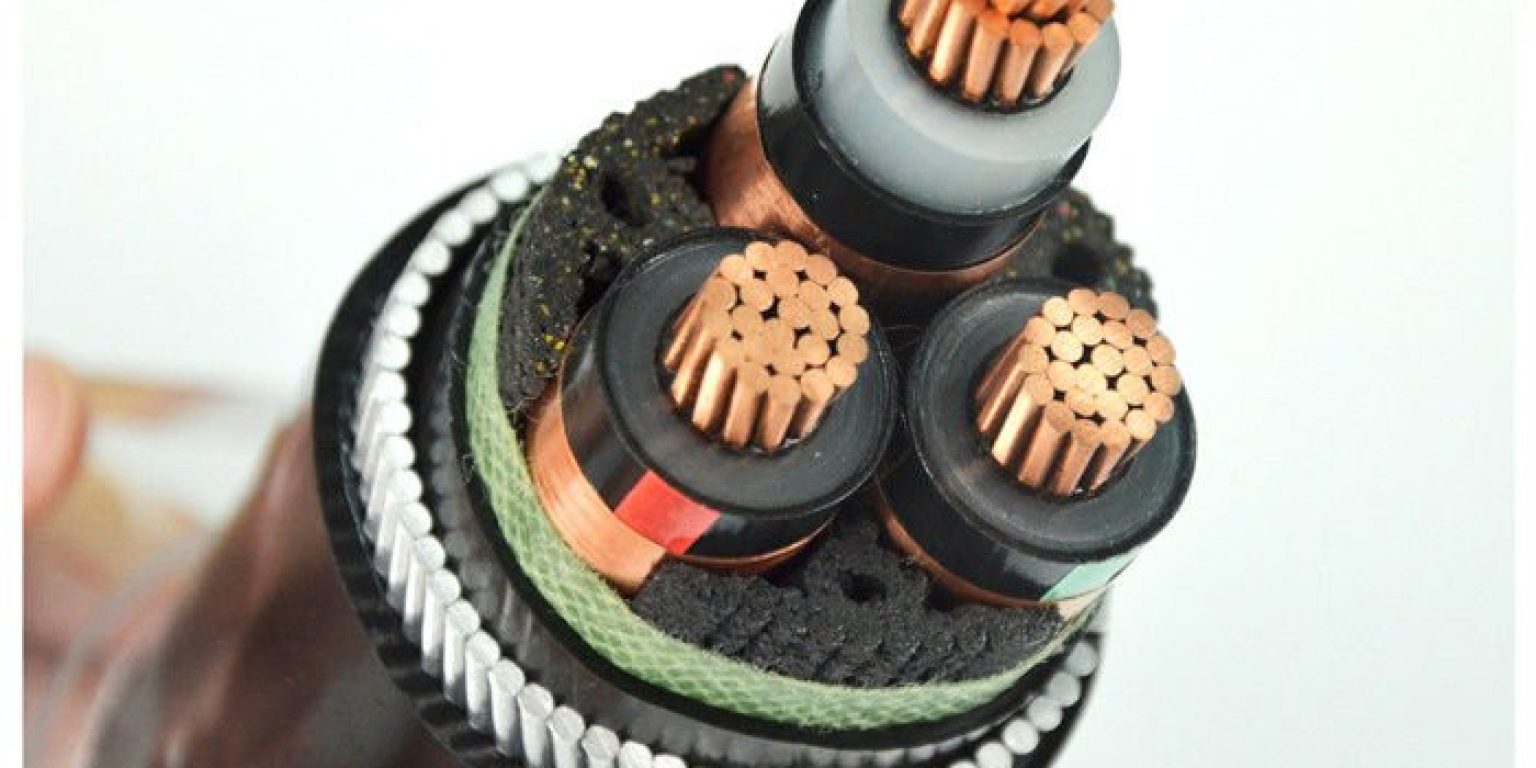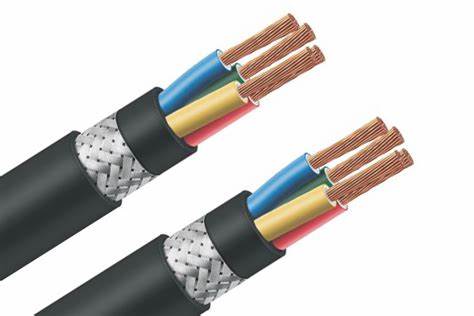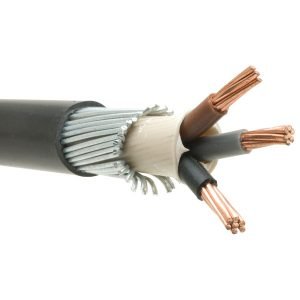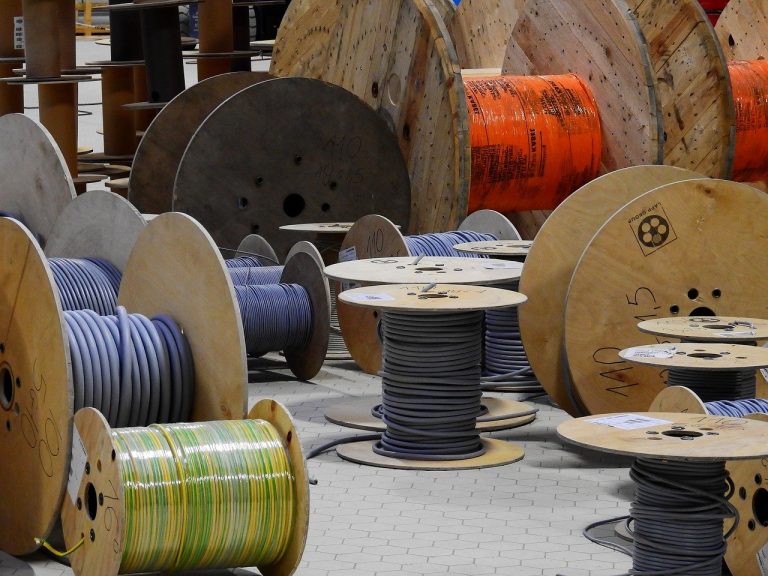An electrical armoured cable is power and extra control cable that is suited for use with mains power. Underground networks, cable channels, power systems, outdoor and indoor applications, and cable ducting are all examples of where the electrical armoured cable is suited. Copper wiring creates ideal conductors for the core, resulting in various forms, including 2 core, 3 core, and 5 core SWA Cables, to mention a few.
1. What Is The Flexible Electrical Armoured Cable?
Image 1:Flexible Electrical Armoured Cable
Electrical armoured wire provides a protective barrier above regular cables. It includes steel tape armoured and steel wire armoured. Armored cables, which have higher mechanical resistance, are more suited for direct burial than conventional cables. The automatic protection layer applied to any cable construction is essential.
Outdoor electrical armoured wires are also flexible. The armored cable works for locations that are prone to mechanical damage and are highly sensitive to erosion. It lays itself using any method, although it is best for straight burial in rocky locations. Bury armoured cable is the best example.
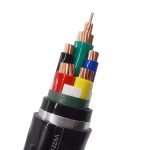
Leading Cable and Wire Manufacturer-ZW Page Armoured Cable SWA & STA According to IEC and GB Standard XLPE
2. What Is The Price Of Electrical Armoured Cable?
Image 2: Armored Cable
Armoured cables are much more costly than non-armored cables. The price of different types of armoured connections varies as well. This is because it’s basically determined by the size in terms of the thickness of cable you need. The thicker the cable you need, the more copper it uses, and hence the higher the price. For example, the price of a 95mm armoured cable is higher than that of a 16mm armored cable. In addition, the price is also affected by the price of copper which keeps fluctuating. ZW Cable‘s 6mm armoured cable and 10mm armoured cable are the best-selling.
3. How To Cut Armoured Electrical Cable?
Armored cable is used to safeguard power lines in places where it deserves protection, such as inside blocks. Electrical armoured cables are usually used underground, so we are called underground cables.
Also Read: Expert Answers To 5 Critical Questions on Underground Cable
Make use of cable cutters, which are intended to cut across armored cables without injuring the cables. You can use lateral cutters to slice through the armor if you really need to make only a few cuts. A saw blade will work if you don’t have any other tools.
Make use of cable cutter.
Change the depth of the cutter blade: When you purchase your wire armoured cable, it should come with a mark indicating the thickness of the armor. Use the dial on the side or top of your cutters to change the depth.
Determine the length of armour cable you’ll use. It’s a good thing to take a few measurements simply to make sure you’re on the correct road. Then, using a red pen, indicate the armor’s size.
Make 6 inches to the first mark. This mark shows where the cable cutters will begin cutting the armored power cable. You’ll have about 6 inches (15 cm) of exposed wire to feed into the junction box if you’re doing it this manner.
In the cutter’s cable guide, place the cables: You’ll discover an empty section underneath the cable cutters’ blades that is about the line’s width. This is where the cord will be inserted to be cut by the blade.
Match the second mark you made on the cutter’s handle with the second mark you made on the handle. The grip is right where the blades will fall inside the cable connector. Position the mark 6 in (15 cm) from your measurement spot by holding the edges together.
Clamp-on the cutters’ bottoms: At the base of the blade is a thumbscrew that can be rotated up into the cable guidance. To secure the cable in the direction, tighten the screws. Drive it up against the base of the line.
Once, turn the knob. If the levels of your cable cutter are properly set, you’ll just need one turn of the lever to slice through into the armor.
Disassemble the thumbscrew to release the cord. After you’ve slashed through the cable shield, unscrew the bottom thumbscrew until the wire is loose. After that, the cable should be pulled from the cutters.
Remove the useless armor: When you remove the cable out of the cutters, the armor to the side of where you sliced should be visible. Remove the armor from the cable, showing about 6 in (15 cm) of wire to put into your fuse box.
4. What considerations should you think about when choosing an electrical armoured cable?
Armoured cable specification
An armoured electrical wire is designed for use in hostile settings in general. This wire is frequently used in areas where it could be damaged mechanically by pests or come into contact with other items. Armoured wires are the greatest alternative when a protected conduit isn’t available. Transmission wires, aerial wires, and power lines are all examples of armored cables.
Types of Armoured Cables
Steel Tape Armored Cable(STA) Steel Wired Armored Cable(SWA)
The diameters of electrical armored cable come in a variety of shapes and sizes. Each version is created with a certain set of essential features in mind, all of which are intended to make it suited for a specific application. You have the option of selecting the cable that is most suited to your project. Steel tape armored cable(STA), Steel Wired armored Cable(SWA), and Aluminum Armoured cables are the most prevalent armored cable kinds. Each of these armored wires has a somewhat different design. These characteristics decide if they are suitable for use in a particular application or not. Before purchasing an armored cable, double-check that it is suitable for the job.
Cable Sizes
It is crucial to consider the size of armored cable when making a selection. Big size cables are suitable for making several electrical connections. Armoured wires are designed to perform specific tasks. It is made to perform a particular amount of operations. When making your choice, keep in mind the type of cable operations you intend to perform. Remember cable specifications concerning your unique purposes.
Protection and Longevity
Electrical Armored cables provide adequate protection and lifespan when conduits are scarce. The armoured wire is a highly recommended situation. It has multiple applications that are susceptible to cable wear and rusting. Shield wires are indicated in high-risk areas such as beneath staircases, basement, and stables. If you get the right kind of armoured cable, you may be confident of its safety and lifespan. A strong armoured electrical cable is required for high voltage applications.
Flexibility Vs. Drive
Electrical Armoured cables seem to be more difficult to bend because they are denser due to an outer layer of steel or aluminum protection. Continually welded armored cabling is excellent for purposes needing a high level of crash safety since they do not spin. Armoured lines with an interlocking armor layout, on the other hand, are appropriate for procedures requiring cable flexibility. Evaluate if the cable you want to buy is highly flexible, according to your demands. Security and Regulatory Instructions
The usage of armor wire is strictly restricted, notably for safety reasons. As a result, you must consult a certified specialist or the authorities for more information. Purchase armored cables that are most suited to your planned purpose. As a result of your decision, you will be better able to avoid any severe code breaches.
You’ll be able to choose the right armored electrical cable suitable for your projects with the help of the information supplied above. Please do not hesitate to contact our staff for additional information on our comprehensive range of armoured cables.
Last Updated on August 27, 2022 by Richard

